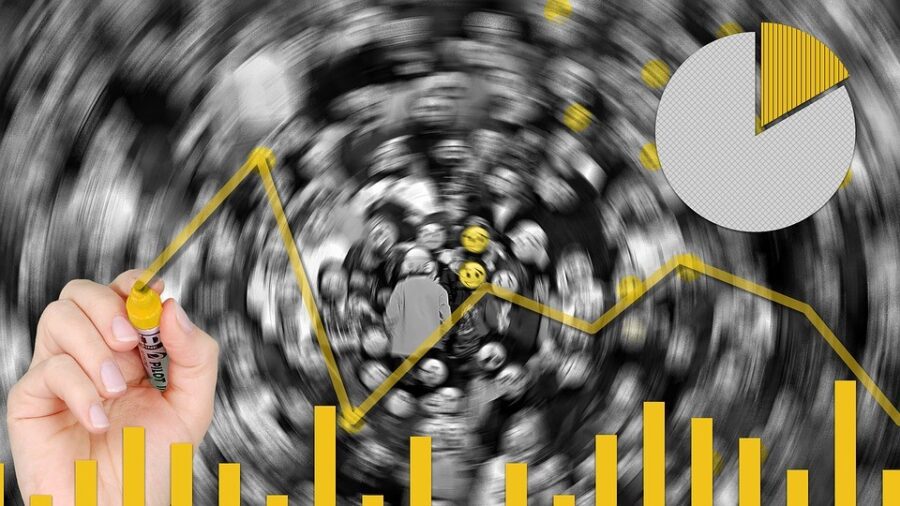This is a guest post by Charles Ebert. Charles is a career mentor, motivational speaker & human resources consultant with over 10 years of experience in HR sector. Find him on Linkedin and Twitter.
Big data is a game changer

Companies deal with challenges when it comes to searching for and hiring the best suitable candidates. Even though in this day and age the internet has made available a lot of personal information (mainly through social media), reviewing this information can be a daunting task that consumes a lot of time.
This is where big data comes into play. It’s aiding companies to find their perfect developers, communication gurus, etc. So how does big data work?
The Future of Recruiting

Big data is a great recruiting technique
Big data is considered to be the future of recruiting (that is if the future isn’t here yet). You require the correct tools, the right mixture of external and internal variables and the appropriate people who know how to explore all of them.
This recruitment method is also called people analytics. It not only invigorates companies’ search for the most suitable candidates but also assists in providing entrepreneurial energy to human resource departments.
According to a whitepaper published by eQuest points, for the human resource field, big data represents a significant opportunity to make the most thorough human-capital decisions based on evidence. Experts are not the only ones who rely on big data during recruitments. For instance, Xerox once reduced the attrition rate in its call centers by 20% via big-data tools to recruit 48,700 people. As a result of this, and after a six-month trial period, the company decided to continue using big data to employ new staff for its call centers.
How Recruiting via Big Data Works

Social media is a great platform for gathering candidates’ information via big data
Approaches for recruiting using big-data include:
- Companies scour the internet for information concerning prospective employees. Social media platforms like Facebook, LinkedIn, and Twitter, are mostly utilized in this case.
- Data aggregation is done within the company. Computers process details contained in various resumes, applications, business cards, among others that are sent to a company.
- Various tests and games can be employed by the HR departments to scrutinize potential employees, gauging reactions and answers for the best patterns and skills.
When all these details have been gathered, algorithms kick in. The optimal result is a collection of information organized into patterns and matches that’s made possible by keywords that reduce the original candidate pool to those who are most likely suitable for the advertised positions.
However, this is not just about loads of data combed through and delivered to a company’s HR department. It’s also about decoding what the algorithms produce. In spite of this, the human aspect is still involved in the machine learning process and hiring.
Big Data and The Human Factor

Big data shouldn’t entirely be relied upon during recruitment
Human resource practitioners are thrilled by the outlook of people analytics. However, they are also advising companies not to let the technology take over the recruiting process entirely. Companies should still rely on the HR professionals when it comes to the hiring of competent individuals.
It mostly takes a recruiter’s judgment to hire the correct person. Personal interaction between the candidate and recruiter provides more crucial data than large amounts of publicly available data. Whatever it takes, establish the connection and hire the most suitable candidate in the right seat at a company. Big data is uncovering skills and talent that normal hiring networks might fail to notice.
Big Data as an Applicant Tracking System
Keeping tabs on every potential employee can be a challenging task for all human resources practitioners and hiring managers. Making good use of big data evaluations can help in making the recruitment process more efficient and effective.
Matching insights gathered via analytics and data assessments, together with the added touch of a video interview as an extra interview tool, can be a highly valuable technique of recruiting top talent in any sector. Whether a company intends to utilize big data as a tool for vetting applicants before conducting video job interviews or as a forerunner to face-to-face meetings, hiring the suitable person for a particular post at the right time is all that matters.
By making use of predictive analytics, a recruiter can gain more knowledge about the applicants that can be expressed via one resume. Also, they are better placed to hire the right individual for every position.
Conclusion
Big data could not have come at the right time. If it’s utilized correctly, it is an awesome thing for everyone. It saves a lot of precious time for recruiters and businesses get vacant positions filled within a short time.
